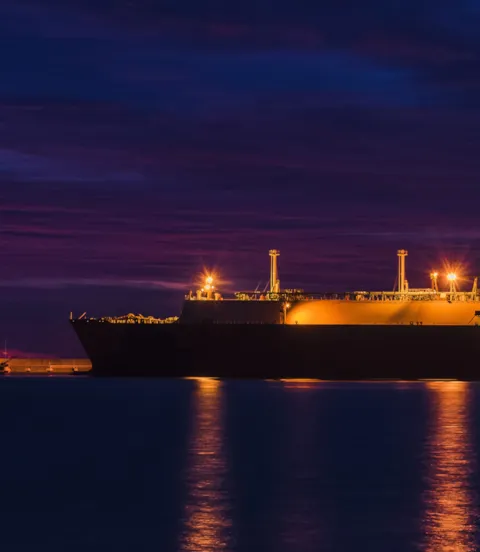REGAS class rules keep pace with a changing industry
The comprehensive overhaul of DNV GL’s class rules includes a completely rewritten regasification section. Since the first FSRUs were introduced a decade ago, the classification society has accumulated plenty of technical and market knowledge that now benefits the industry.
Floating storage and regasification units (FSRUs) are a relatively young and highly dynamic industry segment with a steep learning curve. As a classification society DNV GL has been at the forefront of the technological development, ensuring safety and guiding the industry along the way.
When redrafting its regasification rules DNV GL was not only able to draw on its extensive in-house knowledge and many years of experience but also on feedback from key users, designers, shipyards and shipowners. Naturally the IGC Code forms the basis of the safety requirements, but the updated DNV GL class rules go much further, incorporating criteria derived from practical experience.
True to DNV GL’s policy of offering shipowners more flexibility, they follow a two-track approach, says Johan Petter Tutturen, DNV GL Business Director Gas Carriers. The basic REGAS rules comprise all requirements to ensure safe operation, and a line-up of optional class notations further enhance safety levels on board for those owners and operators who want to go the extra mile. “What is more,” says Mónica Paola Alvarez Cardozo, Senior Engineer, LNG, Cargo Handling & Piping Systems, “our clearly-defined set of basic rules and the add-on Enhanced Safety (ES) qualifier make it easier for shipyards to build to our class.”
The response from designers, yards and owners has been positive, says Alvarez Cardozo. “In particular, major Korean yards who were instrumental in the rule development process and were given the opportunity to comment on the draft rules at a very early stage have been very supportive.”

Saving costs
Accommodating specific needs and new trends and providing flexibility for exceptional situations is part of the DNV GL classification philosophy. For example by opening up the possibility of fitting regasification plants on board non-LNG carriers ship types on a case-by-case basis. Furthermore, the updated regasification rules now reflect DNV GL’s established practice with earlier regasification vessels, e.g. regarding the strength of the regasification module skid or the use of high-integrity pressure protection systems (HIPPS).
One of the most popular changes relates to FSRU drydocking. “Ships are normally required to dry-dock every five years,” explains Alvarez Cardozo. “Our new class notation UWILD (Underwater Inspection in Lieu of Dry-docking) allows an FSRU to remain at a stationary location for as long as desired, subject to flag state approval.
We will do all required inspections as before but carry them out differently, using underwater techniques where applicable.” This inspection model, which can save owners and operators significant costs, has been accepted by several flag states, who will approve its application on a case-by-case basis. Arrangements to accelerate this approval process may be made in future, Tutturen adds.
Rule development work at DNV GL continues. “We are simplifying our mooring rules, leaving behind some of the complexities of the POSMOOR notation which was originally designed for offshore structures in the North Sea. Our new approach will account for more benign waters.” DNV GL is also working on an option to waive the requirement to enter into the tanks every five years, a time-consuming and costly process.
“Our partnership approach means we are willing to do what we can to make our customers’ lives easier without compromising safety,” Tutturen stresses.